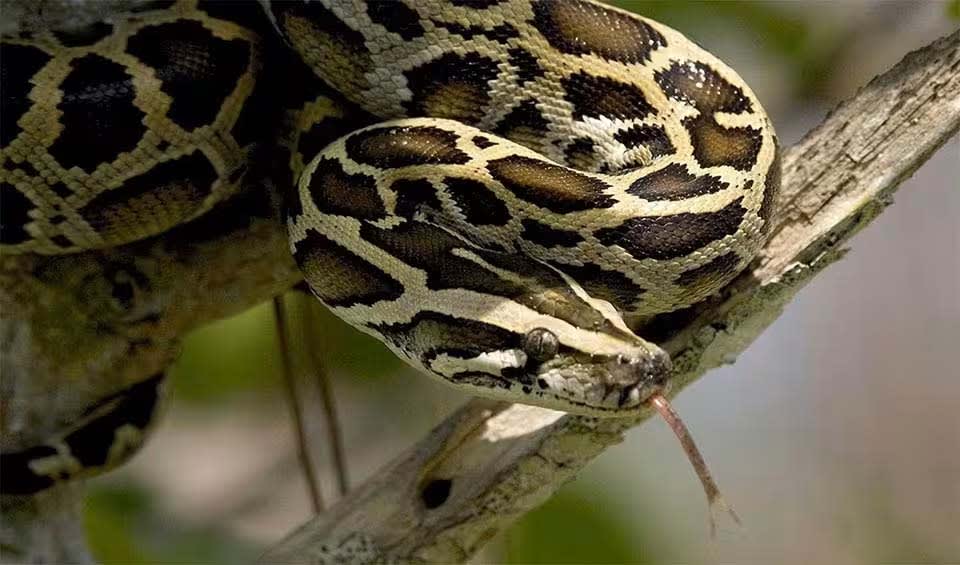One of the largest species of snakes in the world and is a captivating creature known for its incredible size and distinctive appearance. Native to the tropical and subtropical areas of Southeast Asia, this python has become famous both in its natural habitat and around the world due to its striking features and the challenges associated with its conservation.
Burmese pythons have a robust and muscular body, enabling them to constrict and overpower prey that is much larger than might be expected. Their skin is beautifully patterned with brown, green, and tan blotches bordered by black. This intricate pattern helps them blend into their natural environments, such as forests, marshes, and grasslands, making them excellent at camouflage.
One of the most fascinating aspects of the Burmese python is its method of hunting. As ambush predators, they remain motionless and hidden until an unsuspecting prey approaches. They then strike quickly, wrapping their powerful bodies around the prey to constrict it. Despite having no venom, their method of subduing prey is highly effective. After capturing and suffocating their prey, they are capable of swallowing it whole, thanks to their incredibly stretchy jaws and skin.
Burmese pythons are also known for their longevity, often living up to 20 years or more in the wild, and even longer in captivity under proper care. This long lifespan, combined with their large size, requires a significant commitment when kept as pets. In some regions, particularly in the United States, released or escaped Burmese pythons have established invasive populations, particularly in the Florida Everglades. This has posed significant challenges for local wildlife, as the pythons compete with native predators and reduce the populations of native species.
Distribution
 Bangladesh
Bangladesh Cambodia
Cambodia China
China Hong Kong
Hong Kong India
India Indonesia
Indonesia Laos
Laos Myanmar
Myanmar Nepal
Nepal Singapore
Singapore Thailand
Thailand United States
United States Vietnam
VietnamAnything we've missed?
Help us improve this page by suggesting edits. Glory never dies!
Suggest an editGet to know me
Terrestrial / Aquatic
Altricial / Precocial
Polygamous / Monogamous
Dimorphic (size) / Monomorphic
Active: Diurnal / Nocturnal
Social behavior: Solitary / Pack / Herd
Diet: Carnivore / Herbivore / Omnivore / Piscivorous / Insectivore
Migratory: Yes / No
Domesticated: Yes / No
Dangerous: Yes / No




